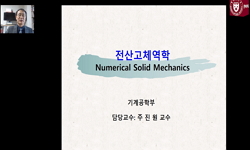By having accurate knowledge of the magnetic field distribution and the thrust calculation in linear synchronous motors, assessing the performance and optimization of the motor design are possible. In this paper, after carrying out a performance analy...
http://chineseinput.net/에서 pinyin(병음)방식으로 중국어를 변환할 수 있습니다.
변환된 중국어를 복사하여 사용하시면 됩니다.
- 中文 을 입력하시려면 zhongwen을 입력하시고 space를누르시면됩니다.
- 北京 을 입력하시려면 beijing을 입력하시고 space를 누르시면 됩니다.



Design Optimization of Linear Synchronous Motors for Overall Improvement of Thrust, Efficiency, Power Factor and Material Consumption
한글로보기https://www.riss.kr/link?id=A105205384
- 저자
- 발행기관
- 학술지명
- 권호사항
-
발행연도
2011
-
작성언어
English
- 주제어
-
등재정보
SCIE,SCOPUS,KCI등재
-
자료형태
학술저널
-
수록면
105-111(7쪽)
- 제공처
- 소장기관
-
0
상세조회 -
0
다운로드
부가정보
다국어 초록 (Multilingual Abstract)
By having accurate knowledge of the magnetic field distribution and the thrust calculation in linear synchronous motors, assessing the performance and optimization of the motor design are possible. In this paper, after carrying out a performance analysis of a single-sided wound secondary linear synchronous motor by varying the motor design parameters in a layer model and a d-q model, machine single- and multi-objective design optimizations are carried out to improve the thrust density of the motor based on the motor weight and the motor efficiency multiplied by its power factor by defining various objective functions including a flexible objective function. A genetic algorithm is employed to search for the optimal design. The results confirm that an overall improvement in the thrust mean, efficiency multiplied by the power factor, and thrust to the motor weight ratio are obtained. Several design conclusions are drawn from the motor analysis and the design optimization. Finally, a finite element analysis is employed to evaluate the effectiveness of the employed machine models and the proposed optimization method.
동일학술지(권/호) 다른 논문
-
High Efficiency Alternating Current Driver for Capacitive Loads Using a Current Balance Transformer
- 전력전자학회
- Jong-Bok Baek
- 2011
- SCIE,SCOPUS,KCI등재
-
Comparison and Evaluation of Anti-Windup PI Controllers
- 전력전자학회
- Xin-lan Li
- 2011
- SCIE,SCOPUS,KCI등재
-
Modeling of the Sampling Effect in the P-Type Average Current Mode Control
- 전력전자학회
- Young-Seok Jung
- 2011
- SCIE,SCOPUS,KCI등재
-
Zero-Voltage-Switching Boost Converter Using a Coupled Inductor
- 전력전자학회
- Hyun-Lark Do
- 2011
- SCIE,SCOPUS,KCI등재




 ScienceON
ScienceON







